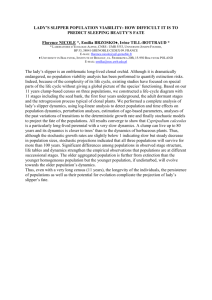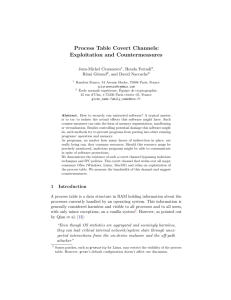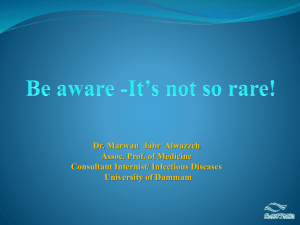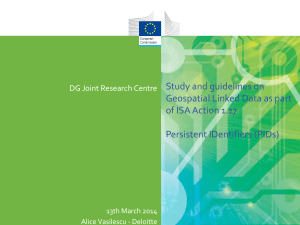Medicine and Ecosystem dynamics
advertisement
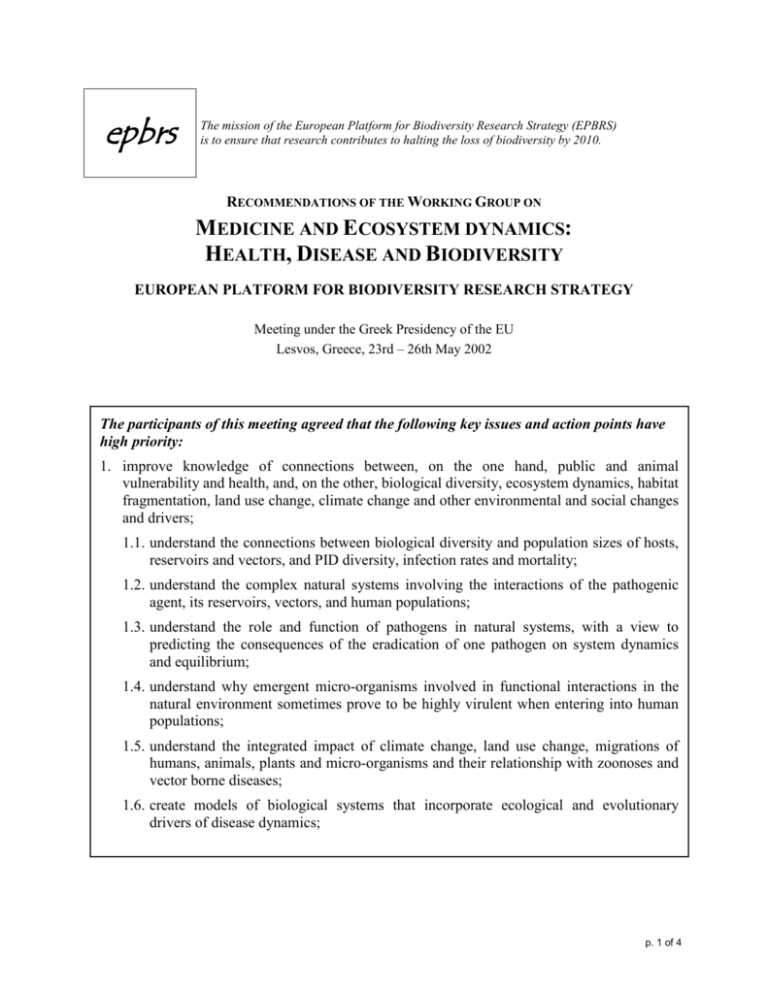
epbrs The mission of the European Platform for Biodiversity Research Strategy (EPBRS) is to ensure that research contributes to halting the loss of biodiversity by 2010. RECOMMENDATIONS OF THE WORKING GROUP ON MEDICINE AND ECOSYSTEM DYNAMICS: HEALTH, DISEASE AND BIODIVERSITY EUROPEAN PLATFORM FOR BIODIVERSITY RESEARCH STRATEGY Meeting under the Greek Presidency of the EU Lesvos, Greece, 23rd – 26th May 2002 The participants of this meeting agreed that the following key issues and action points have high priority: 1. improve knowledge of connections between, on the one hand, public and animal vulnerability and health, and, on the other, biological diversity, ecosystem dynamics, habitat fragmentation, land use change, climate change and other environmental and social changes and drivers; 1.1. understand the connections between biological diversity and population sizes of hosts, reservoirs and vectors, and PID diversity, infection rates and mortality; 1.2. understand the complex natural systems involving the interactions of the pathogenic agent, its reservoirs, vectors, and human populations; 1.3. understand the role and function of pathogens in natural systems, with a view to predicting the consequences of the eradication of one pathogen on system dynamics and equilibrium; 1.4. understand why emergent micro-organisms involved in functional interactions in the natural environment sometimes prove to be highly virulent when entering into human populations; 1.5. understand the integrated impact of climate change, land use change, migrations of humans, animals, plants and micro-organisms and their relationship with zoonoses and vector borne diseases; 1.6. create models of biological systems that incorporate ecological and evolutionary drivers of disease dynamics; p. 1 of 4 Medicine and Ecosystems Dynamics 2. understand the mechanisms of mutation, selection, and evolutionary change of microorganisms that lead to zoonoses including the effects of vaccine pressures on the evolutionary dynamics of PIDs; 3. predict the impacts of these dynamics on the effectiveness of disease control, with a view to establish new policies and strategies for disease control; 4. develop alternative approaches to control of PIDs, including biological control; 5. launch long-term epidemiological surveys designed appropriately for the complex nature of PIDs; 6. develop and implement integrated ecological and medical strategies to prevent PIDs. The above research priorities stemmed in particular from the following considerations: human parasitic and infectious diseases (PIDs) and bio-toxic illness account for hundreds of millions of deaths annually, and in the last 4 centuries they have killed more humans than all other causes combined; PIDs are part of the natural biodiversity of the planet and play a significant part in ecosystem dynamics. Pathogenic agents are not pathogens by nature. They become pathogenic in certain conditions that may be identified and understood; hosts, vectors and reservoirs of PIDs interact with physical and ecological elements of the environment; most of the etiological agents of PIDs, and almost all emergent diseases, are transmitted from animals to humans, and are hence said to be “zoonotic”; climate, economic conditions and limited public education in most developing countries interact to create an environment in which many pathogens are maintained and propagated; PIDs depress human potential and economic prospects, particularly in developing countries, where people are often exposed to, and may suffer from, more than one PID at a time; infectious and parasitic organisms are rarely extinguished but may decline into insignificance to human beings while they evolve new variants adapted to new environments; zoonoses and other new diseases or diseases that have been absent for centuries are appearing more frequently; new agents of disease have emerged and ancient ones re-emerged throughout the history of humanity (see annex). New pathogens probably never occur ex nihilo, but existing organisms may cause new diseases. There is no known way to predict when or where a new zoonotic pathogen will emerge2; A truly “new disease” is a condition with causes and manifestations distinct from those of any known disease . Most emergent disease organisms have not yet evolved the traits needed to establish a new life cycle in humans. These emergent diseases are often particularly virulent, causing death soon after infection, such as “Ebola”; 533563332 p. 2 of 4 Medicine and Ecosystems Dynamics medical sciences have historically focused on the symptoms and the plight of the victims of disease, and connections between humans, the disease, health education and health policy. It is unlikely that in the near future medical science will develop significant new vaccines against major vector-borne diseases; Emergent diseases are not all new, but include rare diseases that become common (sometimes as a result of an increasingly aged population), mild or socially tolerated diseases that become severe or socially unacceptable, and diseases newly identified by new methods or technology. Improvement on public health policies and strategies and better management and control of pathogens depends on significant advances in scientific understanding of the dynamics of biodiversity, ecosystems and disease dynamics. Emergent disease is an extremely important phenomenon with significant economic and social implications for Europe, where in the past few years, emergent diseases have increased, especially in the South3, but perhaps more notoriously in the Kreutzfeld-Jakob disease outbreak in the UK. The control or eradication of pathogens has focused on the ætiological agent or on eliminating the breeding sites of its vectors by physical or chemical means, but rarely on the ecological and social webs in which transmission cycles occur. ________________________________________ 1 The life cycle of the causative organism or agent typically depends upon non-human vertebrate reservoirs, one or more vectors, and human hosts. Examples of zoonoses are smallpox (originally acquired from cattle), malaria, yellow fever and dengue (from mosquitoes), measles (from ungulates or dogs), influenza (from pigs or chickens), and HIV (from monkeys). The agent of many human diseases (including plague, malaria, yellow fever, dengue, filariasis, typhus, trypanosomiasis, leishmaniasis, Rocky Mountain spotted fever, relapsing fever, Chagas disease and sandfly fever) are transmitted by blood-sucking arthropod vectors from a vertebrate host to the human victim. 2 Neither AIDS nor bovine spongiform encephalopathy were predicted, and nor was the appearance of the West Nile virus in the US. 3 e.g. malaria. Other emergent diseases are appearing in the south of the Mediterranean basin 533563332 p. 3 of 4 Medicine and Ecosystems Dynamics Annex: Reasons for emergence and reappearance of disease decrease in disease incidence in the 1960s and 70s leading to - loss of political interest and financial support for eradication programmes, diminished monitoring, and the loss of training programmes to detect, diagnose, control and treat the disease; - loss of immunity in large fractions of the human population that are now newly exposed to the resurgent disease; changes in the population size and distribution of vectors of infectious agents, such as mosquitoes; changes in habitat that force the vector to change its behaviour and come more into contact with humans; increase in mosquito breeding sites near human habitation, including tyres and discarded recipients filled with rainwater, and increase in shelter for rodents in refuse near human habitation; changes in weather patterns, and possibly in climate, that allow the animal transmitter to change its normal range of distribution; intrusion of human populations into previously unoccupied areas where they come into contact with infected host organisms and disease vectors; higher densities of human populations, especially in urban slums with poor sanitation, which allows new diseases to develop and helps some other PIDs to persist; poor economic conditions leading to poor nutrition and reduced resistance to disease in the human populations of many developing countries, especially in urban slums; changes in public health policy away from prevention, as investment in the public health infrastructure has fallen away, and towards increased reliance on emergency response; collapse of public health and vector control programs in areas disrupted by war; the high cost and relative difficulty of access of drugs; incorrect use of antibiotics and other medicines, leading to mutation and the emergence of strains of infective agents resistant to drugs; incorrect and inadequate use of insecticides, leading to genetic selection for resistance to insecticides among populations of vectors; increasing movements of tourists into areas that bring them into contact with the disease; increasing trade of animals and animal products and decreasing border controls that could detect and contain potential sources of infections; accidental transport of potential vectors, often by passenger or cargo jets, into areas where disease agents are resident in reservoir populations but where no vector yet exists between reservoir and human populations; lack of public accountability in the industrial production of food made out of animals. 533563332 p. 4 of 4



